Scion Of Ikshvaku- A Critical Breakdown
May 31, 2019 • 241 views
Scion of Ikshavku- A demythologised text or a modern Ramayana?
Introduction
The word ‘demythologization’ means removal of mythological elements from any writing, especially a religious text or to present something in a way that removes any mystery surrounding it.
India is a land which has given the world two of the greatest epics The Ramayana and The Mahabharata. Ram and Krishna- the two central characters of the epics have been ruling our minds and hearts for centuries; they in a way have become an inseparable part of our lives. These two epics are not just mere books, but a window through which the Indian civilisations can be viewed and understood.
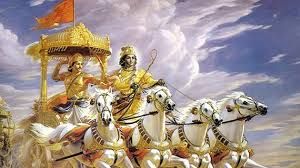
The Mahabharata
The word Ramayana can be perceived or translated as ‘Ram’s journey’. Valmiki has presented an idealised image of Lord Ram which has served as a great example given to the young sons by their mothers, idol of many and has also built a foundation of faith among the masses. For him Ram was an ideal hero, with all the virtues. A perfect man. The simple yet spell bounding charm of this epic has appealed to many poets and writers of different regions, languages and sects and have inspired them to create a different version of Ramayana in their own individual ways.
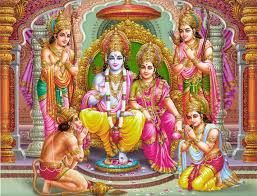
The Ramayana
In English literature and regional writings many writers have created their own version of Ramayana, the most recent being the Scion of Ikshvaku. Amish Tripathi is one of the most recent examples of demythologizing a religious text in the modern times. The most special feature about ‘his’ Ramchandra is that despite delineating him as a deity, he is portrayed as an ideal, brave, law abiding and an intelligent human being.
Religion and life course go hand in hand in India. Hindus have always been introduced to the character of Lord Ram as the avatar of Lord Vishnu himself, the perfect man with godly powers and the most loved prince. But the very fact of the treatment of Lord Ram’s character as not an avatar but an ostracised and tortured human prince is what makes the book very intriguing and unusual in the sense that it breaks all the stereotypes of the character of Lord Ram and the whole idea of The Ramayana itself.
The main theme of The Ramayana is the need to uphold one’s duty, following the law while exploring the concept of realisation of the values that makes a man perfect and the concept of Dharma, as not just a religious institute but a way of life and responsibility of one towards their family, society and nation.
Valmiki’s portrayal of the perfect, idealised Ram opened several gates for different individuals not only as a medium of inspiration but also as a different way of perceiving him. It became a medium of expression of different ideologies and philosophies with changing times.
Bhusundi Ramayana says “Ramayanam anantakam” (the versions of Ramayana are endless). Tulsidas also wrote that “Harikatha Ananta” (Ramkatha is limitless). A.A. Macdonnel, a noted Sanskrit scholar has summed Ramayana as “a grammar of human relationships”.
Demythologisation and portrayal of characters in a completely different light
Ramanujan has suitably remarked that the story of Ram is so vast that no text can define it as every telling has an interpretation and every interpretation has a telling. As an oral narrative, Ramayana has multiple versions, especially in the south Indian regions and South East-Asia. There is an extensive tradition of story-telling on stories based on Ramayana in countries like Indonesia, Laos, Bangladesh and so on. There are also many regional versions as well with many deviations like Kamban’s Ramayana in Tamil, Tulsida’s Ramcharitra Manas or Krittiras’ Bengali version. There are Buddhists and Jain version of The Ramayana, where in one Dashrath is depicted as the King of Benaras, and in other Ravan as a devout Jain. Such deviations are also observed in Amish’s Scion of Ikshvaku in a higher degree.
The character of King Dashrath

A scene depicting Ram and Sita being sent to exile and taking King Dashrath's blessings, one last time.
Amish’s Dashrath is complete opposite of the stereotypical image of the King in The Ramayana. He does not love and adore Kaushalya, the eldest Queen despite blames her for her inability to produce an heir for the kingdom, leading Dashrath to marry Kaikeyi, daughter of King Ashwapati of Kekaya; second and the favourite wife and Sumirta, princess of Kashi and the third wife.
He is also shown as a man driven by anger and impulse. This results in Dashrath losing the war of Karachapa with Ravan, which lefts his one of legs being paralysed and a severely injured shoulder. Not being able to accept his first ever defeat, he blames Ram for the same as “…as he was convinced that Ram was born with bad karma and his birth was the undoing of the noble lineage of Raghu… Dashrath believed Ram’s birth was inauspicious… and all the good deeds of Ram’s life would not succeed in washing away the ‘taint of 7032’,the year that, according to the calendar of Lord Manu, Dashrath was defeated and Ram was born.”
This major deviation of the author’s treatment of the King, also shows that Dashrath did not possess royal virtues that were required in a great King, which is poles apart from the ‘actual’ Dashrath who loved Ram endlessly from the day he was born.
There are many instances in the book, where Kaikeyi fully controls Dashrath both emotionally as well as mentally as if he has no mind of his own. As the story gradually moves, the character of Dashrath develops from a man driven by his anger towards Ram and to have completely lost his morale and being psychologically controlled by his favourite wife, to him realising his mistake of hating and blaming his own son for years, Ram’s true worth, his blooming relationship with Ram and his ‘rise’ as the King of Ayodhya once again.
“ ‘Do you know whom I blame?’ asked Dashrath. ‘If I were truly honest, if I had the courage to look deep inside my heart, the answer would have been obvious. It was my fault; only my fault. I was reckless and foolhardy. I attacked without a plan, driven only by anger. I paid the price, didn’t I? My first defeat ever and my last battle forever.’
‘… do not interrupt me, Ram. It was my fault. And I blamed the infant you were. It was so easy. I just had to say it, and everyone agreed with me. I made your life hell from the day you were born. You should hate me. You should hate Ayodhya.’
‘I don’t hate anyone,Father.’
‘The entire universe conspired to break you, and here you are, still unbowed. What metal have you been forged from?’
‘You, Father.’ Dashrath laughed softly. He was discovering his son.”
(Tripathi, Amish, 2015:129)
He also seemed to have woke from his deep, ignorant slumber prolonged by the lullabies of Kaikeyi’s emotional blackmailing and manipulative control combined with his blinded rage and discouragement from all side which had rendered him a namesake King; to get his aura and reputation back.
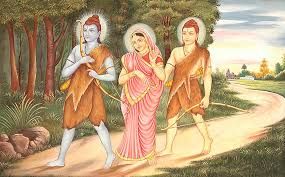
Ram, Sita and Lakshman in exile.
During the end of Dashrath’s character, i.e. his death during Ram’s exile as a result of deep sadness on his parting with Ram, Amish has portrayed Dashrath as the one presented in the original texts, especially when he calls him the “protector of Raghu clan” (Tripathi, Amish, 2015:132) and announces him the next King and when he says that “Ram will go down in history as one of the greatest emperors ever. I will be remembered as Ram’s father for all times to come.” (Tripathi, Amish, 2015:309)
The city of Ayodhya
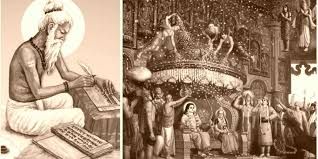
The ancient city of Ayodhya.
Valmiki Ramayana shows Ayodhya as the perfect city, comparing its grandeur to the city of Amravati, the city of Indra. But Amish has shown the city in a very unconventional light. A complete contrast to the original version. The city is shown deteriorating under Dashrath’s rule, especially after the kingdom’s loss in the Karachapa war. Once a wealthy and a prosperous kingdom which was known for its wonderful architecture, especially the elaborate and the grand temple of the Trinity and the Grand Canal was now slowly depleting,
‘The Ayodhyan royalty wasn’t able to maintain it anymore… The gold leafing on the crowns of Lord Brahma, Parshu Ram and Rudra had begun to wear off… and the sandstone floor was chipped in many places. The Grand Canal itself had begun to split and dry up, with no repairs undertaken; the Ayodhyan royal administration was probably unable to budget for such tasks.’ (Tripathi, Amish,2015:38)
Apart from the architectural and economic decline, the city seemed to have undergone through moral decline as well; as the citizens were slowly becoming unlawful, rebels and uncooperative. The rich and the noble considered themselves above the law and tried to brow beat the police when the law caught up with them,
“Crime rates were high; law and order were abysmal… the poor suffered terribly as a result…and Ayodhyans broke every law with impunity.” (Tripathi, Amish,2015:113)
Character of Lord Ram
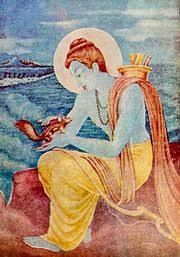
Valmiki has portrayed Ram as Maryada Purshottam- the ideal man, whereas Tulsidas has portrayed Ram as God incarnate or Avatar of Lord Vishnu. The most fascinating aspect of the book, Scion of Ikshvaku, is the treatment of the character of Lord Ram. Generations have perceived and taught the idea of Ram as an Avatar, Lord Vishnu himself. But Amish treats the character of Ram in a very unusual light. In his book, Ram is not a God, but a human prince who has been tortured all his life for a mistake he never did. The author has also created a new concept of “Vishnu”,
“Vishnu was an ancient title accorded to the greatest of the leaders, idealised as the Propagators of Good. Vishnus were worshipped like Gods.” (Tripathi, Amish,2015:37)
It was a task given to the chiefs of the tribes of Vayuputra, a tribe left behind the previous Rudra and the Malayputras, a tribe left behind the previous Vishnu, to find the next Vishnu and prepare him for his role as the greatest leaders of the times. Despite this, Ram in Amish’s book reflects the very qualities we as children have been listening and seeing on T.V.s. He is a complete gentleman and respects women, his ideas on marriage, an ideal partner are very beautiful and demand respect,
“I want a woman who is better than I am; a woman who will compel me to bow my head in admiration.” (Tripathi, Amish, 20151:79)
“Marriage should be looked upon as a sacred partnership between two souls; not as a political alliance between two power centres… My personal preference is for a man to find one woman, and remain loyal to her for the rest of his life… I will marry only one woman and will remain loyal to her for the rest of my life. I will not insult her by marrying another woman or looking at her.” (Tripathi, Amish,2015:215)
One cannot think of Ram without defining him as the ultimate follower of law. His extreme honesty and sincerity towards law sometimes blocks his way to practicality, which also results in his self-imposed exile. He also been shown as a person when it comes to emotions; always calmed and composed. But the readers get to see, perhaps the very first flickers of strong emotion when he sees Sita for the first time,
“His brother’s visage knocked the breath out of Lakshman. Time seems to inexplicably slow down… Ram stood still as he looked intently, his face clam. Lakshman detected the blush on his brother’s face, his heart rate had clearly picked up pace… Ram felt a strange restlessness…Ram’s heart, despite the fact it had never been free reign due to his immense self-control, was probably aware that it has found its ally. It has found Sita.” (Tripathi, Amish,2015: 231,234)
Sita
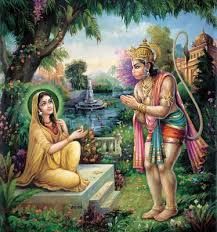
Lord Hanuman paying Goddess Sita a visit, in Ashok Vatika.
The character of Sita also is a reflection of a major deviation. Sita is shown as a strong, independent and a learned woman, who speaks her own mind, is skilled in the art of stick-fighting and martial arts, has a good judgement in political issues and is the prime minister of Mithila. Such traits are a reflection of today’s expectations and desires of how a woman aspires to become and what she should be like. Her character breaks all the stereotypes of Sita Maa. She is similar to the character of Ram in many ways, she is a believer and follower of law, “The law does not make distinction for anyone. But if you will intervene, you will be punished too. Let the law decide the course of actions on its own.” Ram was spellbound. She’s a follower of law.’(Tripathi, Amish,2015:230)
The author very beautifully describes and glorifies her through Ram’s eyes, “like a warrior in the army of Mother Goddess, with lean and muscular physique.” (Tripathi, Amish,2015:230)
Another major deviation which is noticeable is in Amish’s book, Sita before the swayamwar calls Ram in the royal garden to meet him and herself shows him the Pinaka bow- whose care and responsibility was handed over to Sita. Sita with her strength ties the string of the bow and hands it over to Ram and asks him to practice with it in advance so that he is able to win the competition, as Sita wanted Ram to be her husband, “I want you to practice with it. This is the bow which will be used used for the swayamwar competition tomorrow.” (Tripathi, Amish, 2015:251) She is also a wonderful leader as she leads and command the entire police force of Mithila when the city is attacked. In all means, she is a true soulmate to Ram as she promises him her endless support and love. Apart from this all, she is gentle and a humble woman as she even gives respects to those who are way lower than her class. She is a firm believer in equality and has expressed her dislike for the varna system as to how it creates divide among people and how it should be abolished. She also believes that a person’s status in the society should be decided by his karma and not his birth and people should be allowed to take up any job they are good at, irrespective of their caste, “We need to destroy this birth-based caste system. It has weakened our dharma and our nation. It must be destroyed for the good of the country. If we don’t destroy the caste system as it exists today we will open ourselves to attacks from foreigners. They will use our divisions to conquer us.” (Tripathi, Amish, 2015:290) This can be very well observed in today’s India where the society is divided on so many aspects, which has made us vulnerable to others.
Conclusion
Despite the author demythologising major aspect of the original course of the epic, the story of Ram by Amish seems quite realistic and fascinating. The most important part of the book is the infusion of the evils and the issues the society faces today, which seems as an original part of the text. There is an introduction of a new character, Roshini, the daughter of Manthra who unlike the other versions is a shown as the richest trader of the Sapt Sindhu. Roshini is a complete opposite of her mother, she is a true philanthrope, people’s person and the rakhi sister of the four princes. In the book, Roshini gets gangraped and is left to die with brutal wounds on her body and acid thrown all down throat. One of the main victims, Dhenuka, is not sentenced to death unlike his other allies, because he is a minor. Ram’s this judgement leads to a massive protest by an angry mob of the city, Ayodhya decides to take matters in their own hands, “The fuming judges under Ram, had pronounced a detailed, exceptional procedure for the execution: that it would be carried out in public, that they would be made tobleed to death; and that it would be as painful as can be, they justified their impropriety by asserting that it would serve as a lesson for time to come” (Tripathi, Amish, 2015:147)
This introduction of a new but unfortunate incident is an indirect reference to one of the country’s most shameful and traumatising unfortunate event- the Nirbhaya case, which brought the entire nation forward for justice to the poor soul. And the painful way the culprits were punished, serves as a way of pent up frustration, anger, shock at the unfathomable degree of crime, and the inefficiency of our law today. Readers, especially the young generation must have felt some kind of satisfaction in the way the culprits were punished and which makes them want for the law to adopt such extreme ways of punishment for such heinous, animalistic crimes and criminals. This incident also shows giving power to the woman who have suffered from Dhenuka’s hands to come forth and raise their voice against such crimes, “The chief of Isla was beaten black and blue by the woman of his village when he made vain attempts to protect his son, Dhenuka.”(Tripathi, Amish, 2015:143) . Also, Bharat and Shatrughan going out of the sphere of law and punishing the “underage victim” Dhenuka in the same way as his own brutal, heinous ways towards Roshini, seems to be driven by society’s actual desires to punish the culprits of Nirbhaya.
Readers, especially young women find a sense of satisfaction and somewhat a sadistic pleasure as they are able to connect themselves with the things they go through and how unsafe they feel in their own society and how they would like their culprits to be punished for crimes, for which there is no forgiveness and mercy. Ram, with his obsession with following the law, sometimes robs him of his practicality and blurs the line between morally correct and politically correct ways of justice. And his decision of not announcing death penalty for Dhenuka just because he was minor, was exactly what happened to one of the culprits of Nirbhaya; hence in a way Ram becomes the symbolic of the present scenario of our country’s law today.
Apart from this there is also new flavour added, of Science and technology to the text. In the older versions, all the astra and the shastras were the manifestations of years of mediation, secret mantras and some divine powers. But in Amish’s book these shastras are a product of engineering and scientific development. One does not need to have these divine powers or mantras to be able to use them; one such example being the Asuraastra which originally is a spiritual weapon provided by the deity- Lord Rudra, but Amish has broken it down into a scientific success as a biological weapon which emits a poisonous green gas, capable of incapacitating the enemy for days. Also, the legendary Pushpak Viman originally, a mythological flying chariot full of supernatural and divine powers is nothing but a scientific marvel, “It was a giant conical craft, made of some strange, unknown metal. Massive rotors attached to the top of the vehicle, were swinging with full force, in a circular motion. The body of the craft hole had many portholes, each of which was covered with thick glass.” (Tripathi, Amish, 2015:237).
There are many instances in the text where Sita expresses her dislike for the caste system and wants to abolish it, which reflects the mindset of the country’s youth who breaking all these unjust norms and are fighting for the equal status of all, as well as the government who is working for the same. Ram’s views on marriage and loyalty towards one woman or one partner, seems like an unsaid desire and expectation of today’s youth where the actual meaning and depth of relationships have declined, making them a time pass. His views on equal status for women and his belief for women’s education, makes him instantly likeable and appealing to the readers.
Also Lakshman’s rebellious nature and love for rich food, Bharat’s manly charm and liberal ideas and Shatrughan’s joyous and intellectual nature makes them very likeable and they sometimes serve as a comic relief in some tense situation. Amish’s has also used the tool of “slangs”; there are many instances when the main characters use the language or the slangs, the generation uses. This removes the mythical charm of the text and gives it a more realistic feel, especially when in a conversation with Sita, Ram says, “Touche”(291) or when Bharat angrily exclaims, “Dammit, Dada” (146) in an angry conversation over Ram’s inability to justifiably punish Dhenuka or when Lakshman says, “To hell with law.”; Ram or Bharat or anyone would never make use of such language, but the author’s new twist, makes it relatable to the youngsters.
Another major deviation is the introduction of a new “race”, the Nagas. They were humans born with deformities which often gave them an appearance of a human body but with animalistic features. Amish in the book describes the character of Jatayu and Hanuman, originally the youngest son of Aruna (the charioteer of Surya dev) and a vulture, who dies saving Sita from Ravan and Hanuman is the son of the Vanar sena chief Kesari and his wife, respectively, in this new manner.
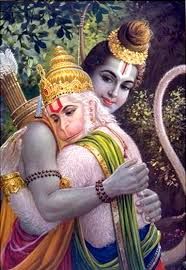
Lord Hanuman
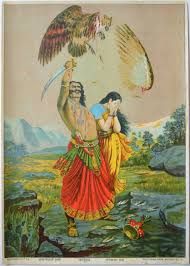
Jatayu vadha
Such altered descriptions have totally removed the mythical and the magical charm of the original epic. Although it has resulted in making it more relatable to the youth, as it seems almost real, but at the same time it seems to erode the faith in the existence of God and the truthfulness of such event. Its more like a “Modern Ramayana”, all thanks to the author’s creative imagination, which makes it an interesting read especially among the modern readers, who by identifying themselves with the protagonists’ principles and values might get inspired to become more goal oriented, law-abiding citizens and work towards forming a perfect harmonious society as talked highly about, in the original texts.
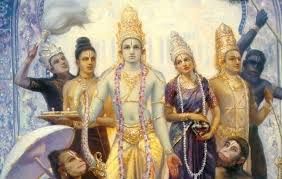
Work Cited
1.Tripathi, Amish. Scion of Ikshvaku. New Delhi: Westland Ltd publishers, 2015
2.Ramanujan, A.K. Three hundred Ramayanas: Five examples and three thoughts on translation. An essay included in the anthologyMany Rāmāyaṇas: The Diversity of a Narrative Tradition in South Asiaedited by Richman, Paula. Los Angeles:University of California Press, 1991
3.Reference from quotes from Ramcharitramanas. Tulsidas, Goswami. Gorakhpur: Gita press.
